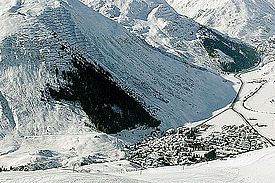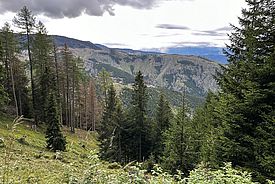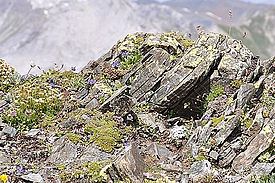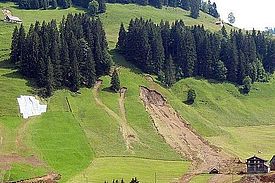
Mountain ecosystems ¶
Head: Dr. Peter Bebi
The Alps cover around 60% of Switzerland. Their ecosystems provide habitats for many plant and animal species. They also serve humans in many ways, for example helping to protect against natural hazards such as avalanches and rockfall, providing renewable natural resources or attracting tourists to mountain regions.
We investigate how mountain forests and treeline ecotones are changing over time, and how this affects their protective function against natural hazards and the provision of other ecosystem services and ecological aspects. Our findings are used as a basis for decision support in mountain forest management and natural hazard simulations. In addition, we explore habitats above the treeline. We investigate how plant communities, their diversity and interactions with other organisms such as microbes, herbivores or pollinators are altered by climate or land use change. Improving our understanding of the response of mountain ecosystems to global change is important to better predict and manage global change impacts.
Brief insight into our research activities ¶
Protective forests ¶
Mountain forests protect humans and infrastructure cost-effectively against natural hazards, such as avalanches and rockfalls. We investigate which properties of a forest determine the level of protection and how this may be altered by climate change, natural disturbances and forest management. Together with implementation partners we help to ensure that the protective function of mountain forests continues to be fulfilled in the best possible way.
Treeline ecotones ¶
Treeline ecotones, i.e., the transition zones between mountain forests and alpine tundra ecosystems, are among the characteristic habitats in mountain regions. Treelines are however shifting in many places as a result of land-use and climate change. We investigate the dynamics of mountain forests and treeline ecotones under global change.
Mountain forest ecology and management ¶
Mountain forests provide essential goods and services to society, yet they are highly vulnerable to climate change. Our research focuses on understanding the impacts of climate change on these ecosystems. By adopting different approaches and methods, and crucially, collaborating with stakeholders and forest practitioners, we strive to develop ecologically-guided strategies for the management of mountain forests in the face of global change.
Plant ecology and biodiversity ¶
Mountain ecosystems are biodiversity hotspots, providing habitats for numerous specialised plant and animal species that occur nowhere else. They also perform important ecosystem functions and services. We investigate why and how plant communities in the mountains are changing – not least as a result of climate change.
Biotic interactions in a warmer world ¶
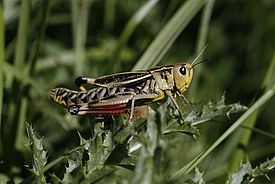
Being the ultimate source of energy in terrestrial ecosystems, plants interact with a variety of organisms such as mutualistic or pathogenic fungi, decomposers, herbivores or pollinators. Climate change is likely to alter such interactions with potentially strong influences on biodiversity and ecosystem functioning. We study biotic interactions along elevational gradients to document changes and improve predictions on climate change impacts.
Soil and slope stability ¶
Opportunities for students ¶
We are always looking for interested students who would like to do a Bachelor or Masterthesis with us. Below you see several open topics. You can also contact the team members indiviudally if you are looking for specific options or would like to do an intern in our group.
- BugNet Project: several topics related to "Climate change effects on plant-consumer interactions"
- Insect monitoring in Mountain Ecosystems
Staff ¶
Mountain Ecosystems
Groupleader |
|
Assistant scientifique |
|
Trainee |
|
PhD student |
|
Scientific staff member |
|
Visiting scientist |
|
Trainee |
|
Scientific staff member |
|
Scientific staff member |
|
Visiting scientist |
|
Postdoc |
|
IT specialist |
|
Technical staff member |
|
Civilian service employees |
|
Scientific staff member |
|
Trainee |
|
PhD student guest |
|
Trainee |
|
Civilian service employees |
|
Senior Scientist |
|
Trainee |
|
Bachelor student |
|
Scientific staff member |
|
PhD student guest |
|
Visiting scientist |
|
PhD student |
|
Master student |
